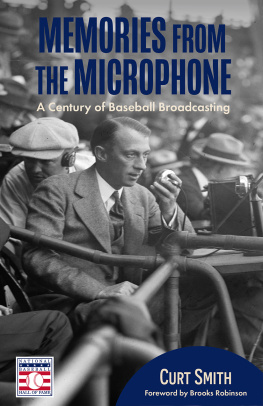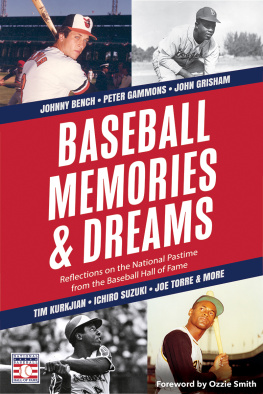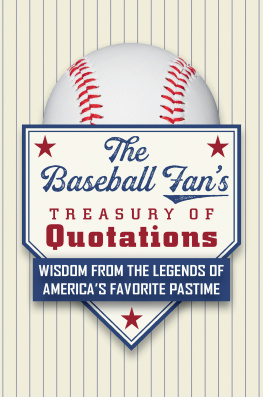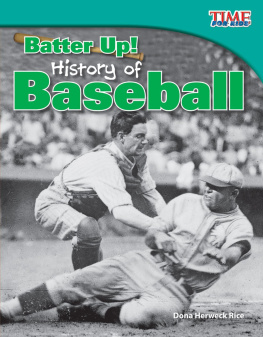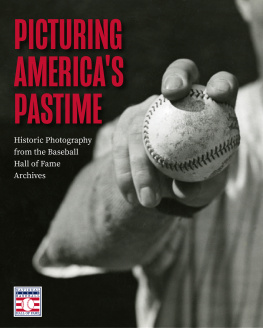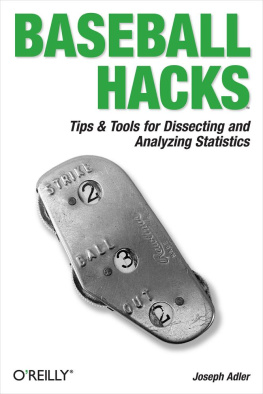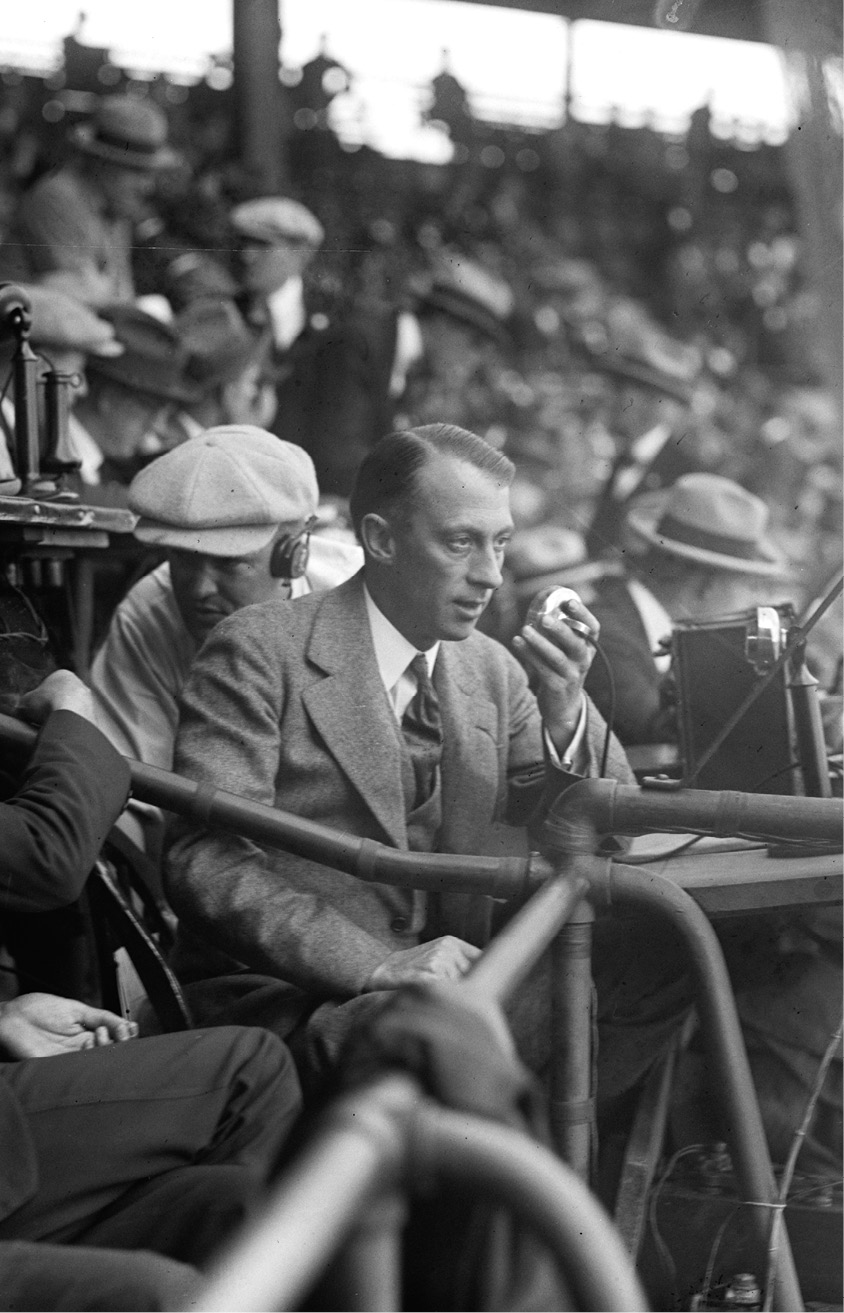

Copyright 2021 by National Baseball Hall of Fame and Museum, Inc.
Published by National Baseball Hall of Fame Books, a division of Mango Publishing Group, Inc.
Cover Design: Elina Diaz
Cover Photo/illustration: Graham McNamee of W.E.A.E broadcasting World Series, 10/5/24. , 1924. [October 5] Photograph. https://www.loc.gov/item/2016838543/.
Interior photos: National Baseball Hall of Fame and Museum
Layout & Design: Elina Diaz
Mango is an active supporter of authors rights to free speech and artistic expression in their books. The purpose of copyright is to encourage authors to produce exceptional works that enrich our culture and our open society.
Uploading or distributing photos, scans or any content from this book without prior permission is theft of the authors intellectual property. Please honor the authors work as you would your own. Thank you in advance for respecting our authors rights.
For permission requests, please contact the publisher at:
Mango Publishing Group
2850 S Douglas Road, 2nd Floor
Coral Gables, FL 33134 USA
For special orders, quantity sales, course adoptions and corporate sales, please email the publisher at or +1.800.509.4887.
Memories from the Microphone: A Century of Baseball Broadcasting
Library of Congress Cataloging-in-Publication number: 2021937677
ISBN: (print) 978-1-64250-675-4 , (ebook) 978-1-64250-676-1
BISAC category code: SPO003030, SPORTS & RECREATION / Baseball / History
Printed in the United States of America

To Cooperstown
Contents
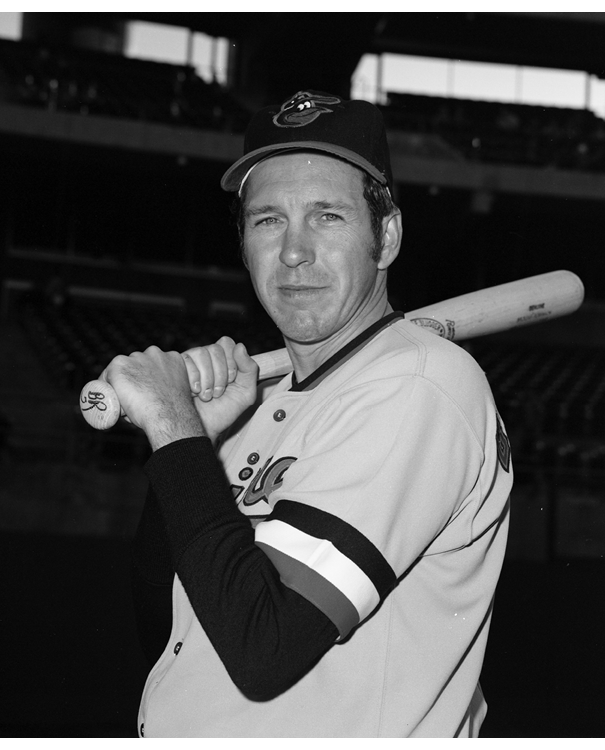
Brook s Robinson
Playing for the Orioles for twenty-three seasons, I didnt think about managing or coaching or bro adcasting.
I was focused on playingon being part of a team that won two World Series and four American League pennants. I think our 1969, 1970, and 1971 teams were as good as any teams that have ever played the game.
So when I retired in 1977, I just assumed that I would leave the game. It was a great time; I had a lot of fun and got to play with some of the greatest athletes the game has known.
But in 1978, WMAR-TV in Baltimore approached me and wanted to know if I wanted to be a part of their broadcast team. Back then, games werent on every day. WMAR televised about sixty games a yearfifty on the road and te n at home.
I thought about it, and after talking with my wife, Connie, we decided that Id give it a try. It turned out to be pretty special, because it was like going to where youve always gone, seeing the guys and being at the gamesnot just shutting everything down in r etirement.
Most of all, i t was fun.
Of course, I found out I needed a little work to be competent at it. So I hired a speech therapist to help me. That first year, shed tape the games and wed go over a few things on the tapes, figuring out where Id made mistakes with wordssome of which Im sure I picked up growing up in Arkansas. But the reason I went to her was so she could critique me and let me know what I could do better.
It was like anything else: You work at it if you want to be g ood at it.
I got to work with some super people: Chuck Thompson, who won the Hall of Fames 1993 Ford C. Frick Award; Bill ODonnell; Scott Garceau, who is doing Orioles games now; and Jon Miller, who won the 2010 Fr ick Award.
Jon and I had a great time; we jogged together on the road, and I remember this one time when we were staying at a hotel in downtown Detroit. We were getting ready to go jogging when I looked out the window and saw they were having a big race in town. I called up Jon and said: Lets go j oin them!
Well, we went down and fell in with the group. But the race organizers werent real happy with us because we didnt register, so we didnt have numbers. But we had some fun!
I found out that there are quite a few things that announcers whove played the game can add to a broadcast. I remember one day in 1980 when we were playing Detroit. The Tigers pitcher was Milt Wilcox, whom I had gotten a hit off of back in Game Two of the 1970 World Series when he was with the Reds.
The first two times up, Eddie Murray just missed hitting it out of the park. I said, The way hes swinging at Wilcox, hes going to hit one out.
Well, it was just the luck of the draw, but the next time up, Eddie hit one out. And people rememb ered that.
Most nights, it was my job to go down on the field before the game and talk to our pitching coach, Ray Miller, to see how they were going to pitch to the opposing hitters. Ray was terrific; he helped me out a g reat deal.
I wasnt the best interviewer, but I kept a notebook on each team, and I would read all the newspapers when we went into towns to get the best information I could. Connie would keep the Baltimore paper s at home.
Id call her up and ask her, Are you saving the paper s for me?
And shed reply, I think you care more about the papers than you do me! But she was very supportive of my career, and I feel very fortunate a bout that.
When youre a broadcaster with connections to a team that wins a World Series, its not quite as special as when youre a playerbut its close. In 1983, I got to be part of the Orioles victory parade. Seeing them win that World Series after having lost the World Series four years earlier in 1979 wa s a treat.
I remember when they beat the White Sox in Game Four of the 1983 ALCS. I was announcing that game, and Tito Landrum hit a home run in the top of the tenth to break a scoreless tie, eventually giving the Orioles the win. Just to know that the next game was going to be in the World Seriesand then to beat the Phillieswas something special. I was lucky to be a p art of it.
It was all part of the Oriole Way, which is how the team operated from top to bottom. Of course, if youre around this game long enough, you look back and wish you had done this or done that. But being a part of those teamson the field and as a broadcasterwas something Ill nev er forget.
I retired from the booth after the 1993 season; I was ready to do something else. But those sixteen years on television gave me a chance to continue to be a part of the game th at I love.
I was privileged to play with the greatest athletes and coaches as well as with some of the greatest sports announcers when my playing career was through. Those broadcasters helped continue and strengthen the connection between the game and the fansa bond that has made baseball the Nationa l Pastime.
Brook s Robinson
The poet Walt Whitman wrote, Where is what I started for so long ago? And why is it yet unfound? Many of us started to listen to baseball broadcasts when we were young. Irrespective of age, it has kept us from gr owing old.
Memories from the Microphone is the first book to evoke a century that began on August 5, 1921, in a makeshift KDKA Pittsburgh studio heard by only a tiny number of households equipped with receiving sets. It tells how largely unknown figures became household names, defining events that helped create a community of the caringour National Game, heard on radio across the entire country, then seen on television, and now accessed via the Internet, available e verywhere.

